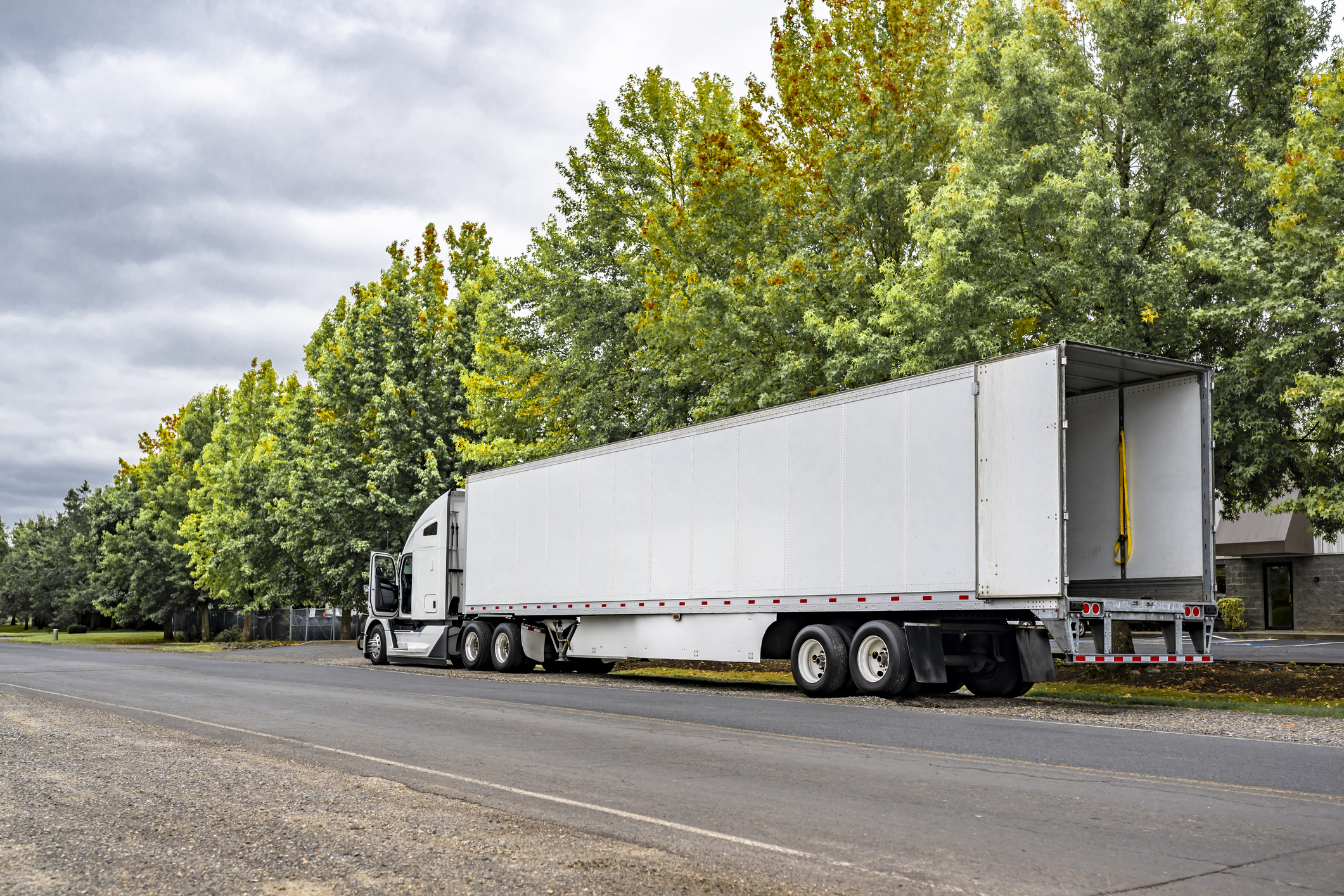Why You Should Know Your Truck Driver Turnover Rate

Managing a situation starts with defining it. When it comes to truck driver turnover rates, the situation can be defined as “consistently challenging.”
High truck driver turnover rates have been an uphill battle for North American trucking carriers for decades. In fact, everything you need to know about truck driver retention centers boils down to a few key metrics. The statistics published by various American trucking associations converge around the same story: Large truckload carriers averaged annual turnover rates of about 94% from 1995 to 2017. And since then, not much has changed, with averages hovering in the low 90s. While the situation is slightly better at smaller carriers, which see about 74% truck driver turnover (as of 2020), we’re still talking about major retention challenges. Add to this a truck driver shortage across the industry, and we see the makings of a perfect storm: high costs, strained resources, and significant pressure on trucking employers to find and keep qualified drivers.
Some trucking companies consider high driver turnover and low truck driver retention to be an inevitable part of the business. But this isn’t necessarily the case. There are lots of steps today’s leaders can take to boost driver retention rates beyond industry standards. First, let’s take a look at how truck driver turnover is calculated.
How to Calculate Your Driver Turnover Rate
Understanding truck driver turnover rates is crucial for modern leaders because this rate directly impacts operational efficiency, profitability, and workforce stability. High turnover rates can result in skyrocketing recruitment and training costs, disrupted service schedules, and diminishing customer satisfaction. Beyond dollars and cents, frequent driver turnover often signals deeper workforce issues. When we look at the situation critically, we peel back layers of problems: dissatisfaction with pay, working conditions, and company culture. And once widespread dissatisfaction sets in, it is pervasive. Every challenge that comes up erodes morale and tarnishes your reputation as an employer.
Knowing your turnover rate isn’t just about tracking a number but also understanding what’s going on in the organization that’s affecting it. Knowing your turnover rate empowers you to address driver needs and build a sustainable business that retains talent in a competitive labor market. So, let’s explore what goes into the turnover rate calculation.
Determining your company’s turnover rate requires just a bit of math. Use the following formula to calculate yours:
Step 1: Determine the Number of Departures
Track how many drivers left your company this year. This includes voluntary resignations and terminations.
Step 2: Annualize the Rate
Divide the number of departures by the number of days elapsed this year. Multiply by 365.
Step 3: Calculate the Percentage
Divide the answer from Step 2 by the total number of drivers in your company, then multiply by 100 to get a percentage. That percentage is your truck driver turnover rate.
Factors Contributing to Driver Turnover

And for many, it is a fulfilling, rewarding career. But the demands of the job are not always easy. There are long hours, time away from home, reliance on people like dispatchers and schedulers who don’t understand the job, and the mental load of responsibility, and that’s not even touching on the dangers of the road and the physical demands. So, when you combine these factors with other challenges, it’s easy to see how retention could become an uphill battle.
Here are some of the biggest factors behind dissatisfaction and turnover in trucking:
Low Driver Pay and Inconsistent Wages
Compensation structures play a critical role in driver satisfaction… or dissatisfaction, as is more frequently the case. Inadequate and inconsistent compensation is one of the biggest issues for truck drivers, who often cite unfair wages as a primary reason for leaving their jobs. Compounding the problem, aggressive recruiting is common practice. Promises of sign-on bonuses and better pay are compelling reasons to jump ship, especially for new drivers. Unfortunately, the promises frequently go unfulfilled, breeding toxic mistrust and keeping drivers in a constant state of job hunting — always open to the next offer because their current role is not providing the financial security they were told it would.
Poor Work-Life Balance
The demanding nature of truck driving — long hours, extended periods away from home, physical demands — often leads to burnout. When trucking companies fail to provide schedules and accommodations that respect professional drivers’ personal lives, the job becomes untenable, driving up turnover rates.
Lack of Career Growth
Sometimes, truckload drivers leave because they feel a lack of opportunity. Fleet managers and transportation companies that fail to offer clear career progression pathways risk losing both experienced drivers looking for more responsibility and newer, less experienced drivers in search of professional development.
Health and Wellness Concerns
From long hours of sedentary work to limited access to nutritious meals and fitness on the road, professional drivers face unique challenges around health and wellness. When these concerns go unaddressed, it impacts retention while simultaneously reducing the number of qualified drivers in the workforce, making it increasingly harder to hire qualified drivers to replace those who quit.
Poor Communication
Miscommunication or a lack of transparency between a trucking company and its drivers fosters a pervasive sense of mistrust. Deceitful recruiting practices — like exaggerating pay, overpromising benefits or bonuses, or overpromising benefits — make problems worse. This leaves drivers feeling not only lied to but also unvalued and expendable. The continued erosion of trust leads to frustration, resentment, and a growing disconnect between drivers and their employers, making it nearly impossible to build loyalty or long-term engagement.
The Cost of Driver Turnover
Turnover is expensive in any industry. But, when turnover rates represent the vast majority of your workforce, the damage is even costlier. These expenses include hard costs for recruitment and onboarding as well as hidden costs like lost productivity, decreased morale, and strained customer relationships.

Recent studies estimate that replacing a single driver costs modern carriers anywhere between $5,000 and $10,000. And that’s just for one. Now, let’s put that into perspective, knowing what we know about average turnover rates. These costs could scale from tens of thousands every month to hundreds of thousands and more. For large fleets, monthly costs can reach upwards of $150,000.
Beyond the financial toll, high driver turnover rates additionally impact customer satisfaction, delay deliveries, and add unnecessary pressure on existing drivers, leading to a vicious cycle of dissatisfied workers.
Efforts to Improve Driver Turnover
While understanding the causes of driver turnover is important, taking actionable steps to address these issues is what truly makes a difference. Companies that actively invest in improving driver retention can reduce turnover rates and build a more loyal workforce. Below are some proven strategies to retain your drivers.
Investing in Onboarding
Onboarding is much more than orientation meetings. These crucial early days in a new driver’s career are an opportunity to establish trust, communicate expectations clearly, and foster a sense of belonging from the outset. When drivers feel supported, informed, and valued during onboarding, they are more likely to stay engaged and committed. Poor or rushed onboarding, on the other hand, can lead to confusion, frustration, and early disengagement, setting the stage for higher turnover. Investing in a structured, thoughtful onboarding program that focuses on drivers’ first 90 days ensures that new drivers are prepared for the realities of the job and feel confident about their decision to join your company, significantly improving their likelihood of staying long-term.
Supporting Health and Wellness
Being on the road often means limited time for a healthy lifestyle, medical appointments, and access to nutritious food. Many drivers prioritize their work and take great pride in being on time and exceeding expectations, unfortunately, sometimes at the expense of their own well-being, which contributes to burnout and turnover.
In cases where trucking companies cannot afford substantial wage increases, they can invest in other areas to support driver health. Offering better healthcare benefits, paid deadhead miles, and vacation time are attainable solutions for many carriers. Providing resources for drivers to maintain their health on the road can include things like access to fitness facilities, healthy meal options, or wellness programs. All of these initiatives can have a lasting impact on retention by showing drivers that their well-being matters and preventing burnout.
Truck Driver Feedback and Communication
Understanding what drivers want starts with asking them. Carriers that create open communication channels and regularly gather feedback from their drivers are better positioned to address retention challenges. This might include surveys, town hall meetings, or anonymous feedback tools like WorkHound that allow drivers to voice their concerns without fear of retribution. This approach is particularly effective in reducing turnover among drivers who feel unsupported or overlooked.
Mentorship and Training for New Drivers
Truck drivers, especially new drivers to the industry, often face a steep learning curve in an already tough role. Many enter trucking for its competitive wages and minimal educational barriers, only to find the realities of long hours, tough conditions, and strict regulations and mandates to be overwhelming. Mentorship programs can help bridge the gap by pairing new drivers with experienced drivers who can provide guidance and support.
Offering training and clear career paths also helps new drivers see trucking as a long-term opportunity rather than a stop-gap job. These initiatives improve retention and build a more skilled and committed workforce.
Understanding and addressing drivers’ pain points can help carriers better align driver expectations with job realities. By considering the challenges of the job and providing key support to alleviate some of the pressure, trucking companies can reduce the disconnect and dissatisfaction that lead to high turnover rates. The first step, of course, is analyzing turnover data to identify patterns and make informed changes that benefit both your drivers and your bottom line.
Turning Insight Into Action: Let’s Reduce Your Driver Turnover
Driver turnover rates tell a story about your business. Every point represents real costs, real challenges, and real opportunities to improve. The key to overcoming high turnover is understanding what’s driving it. Listen to what drivers have to say and take proactive steps to prioritize their needs. With a sharp focus on retention, you can build a stronger, more loyal workforce and significantly reduce the costs and disruptions turnover brings.
WorkHound empowers you to take that first step with a simple, effective way to gather real-time feedback from your drivers. Our anonymous platform helps leaders uncover what’s driving dissatisfaction, what your team truly values, and how you can make the biggest difference in the best ways. Together, our team and yours can turn insights into actionable change. Ready to improve retention and elevate your operations? Contact us today for a free demo and consultation.
driver shortage, driver turnover, trucking industry
Let's Build Better Workplaces Together
Revolutionize your company culture and your worker retention rates by improving communication and engagement.
Book a Demo

